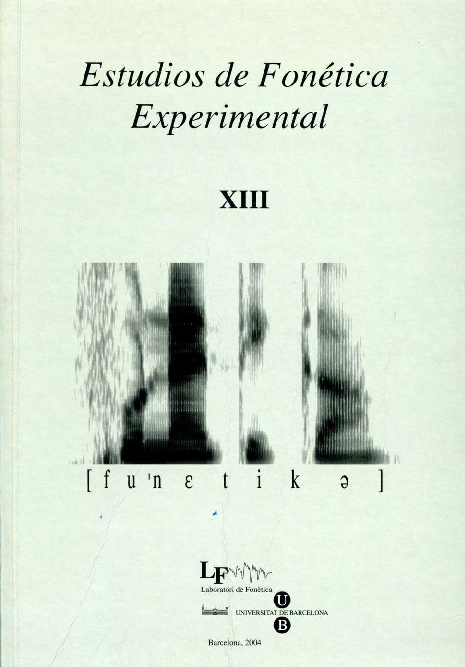Vocales esvarabáticas en grupos consonánticos con elemento lateral
Abstract
This study examines the production and perception of Spanish consonant groupings whose second member is [l]. This lateral sound has vowel-like features in its speech signal, which is a natural component of its production characteristics. The acoustic nature of the vocalic qualities of Spanish [l] is reviewed by spectrographic means, whereas listeners’ linguistic awareness of this information is assessed through a perceptual test. An experiment in which unstressed vowels separating consonant clusters are gradually shortened reveals that sequences involving laterals are more sensitive to this effect than non-lateral groups. Results add support to an explanatory basis for the historical creation of Spanish blends through vowel syncope based on the phonetics of the language.
References
AMADOR, M. (inédito): «The Automatic Vowel of Cr Clusters», Departamento de Lingüística, Universidad de California-Berkeley, Circa 1987.
GILI GAYA, S. (1921): «La r simple en la pronunciación española», Revista de Filología Española, 8, pp. 271-278.
LINDBLOM, B. (1996): «Role of articulation in speech perception: Clues from production», Journal of the Acoustical Society of America, 99, pp. 1683- 1694.
LLOYD, P. (1987): From Latin to Spanish. Volume I: Historical Phonology and Morphology of the Spanish Language, Philadelphia, American Philosophical Society.
MARTÍNEZ CELDRÁN, E. (1997): «El mecanismo de producción de la vibrante apical múltiple», Estudios de Fonética Experimental, VIII, pp. 85-98.
MARTÍNEZ CELDRAN, E. y L. RALLO (1995): «[ -r]: ¿Dos clases de sonidos», Estudios de Fonética Experimental, VII, pp. 179-194.
MASSONE, M.I. (1988): «Estudio acústico y perceptivo de las consonantes nasales y líquidas del Español», Estudios de Fonética Experimental, III, pp. 13-34.
MENÉNDEZ PIDAL, R. (1929): Orígenes del español, Madrid, Hernando.
OHALA, J. (1993): «Coarticulation and Phonology», Language and Speech, 36, pp.155-170.
PICKETT, J. (1986): The Sounds of Speech Communication, Austin, Pro-Ed.
QUILIS, A. (1970): «El elemento esvarabático en los grupos [pr, br, tr]», Phonetique et Linguistique Romaines: Melanges offerts a M. Georges Straka, Lyon-Strasbourg, Societe de Linguistique Roman, pp. 99-104.
QUILIS, A. (1981): Fonética acústica de la lengua española, Madrid, Gredos. QUILIS, A. y J. FERNÁNDEZ (1982): Curso de Fonética y Fonología Españolas, Madrid, CSIC.
NAVARRO TOMÁS, T. (1957): Manual de Pronunciación Española, New York, Hafner.
RAMÍREZ, C. (inédito): «Characterization of the Epenthetic Vowel Between the Clusters Formed by Stop + Flap in Spanish», Ponencia dada en la conferencia Laboratory Approaches to Spanish Phonology, University of Minnesota, 6-7 de septiembre de 2002.
Downloads
Published
How to Cite
Issue
Section
License

This work is licensed under a Creative Commons Attribution-NonCommercial-NoDerivatives 4.0 International License.
All articles published online by Estudios de Fonética Experimental are licensed under Creative Commons Attribution-NonCommercial-NoDerivs 4.0 International (CC BY-NC-ND 4.0 DEED), unless otherwise noted. Estudios de Fonética Experimental is an open access journal. Estudios de Fonética Experimental is hosted by RCUB (Revistes Científiques de la Universitat de Barcelona), powered by Open Journal Systems (OJS) software. The copyright is not transferred to the journal: authors hold the copyright and publishing rights without restrictions. The author is free to use and distribute pre and post-prints versions of his/her article. However, preprint versions are regarded as a work-in-progress version used as internal communication with the authors, and we prefer to share postprint versions.




